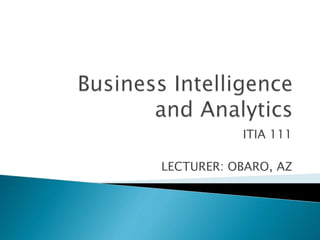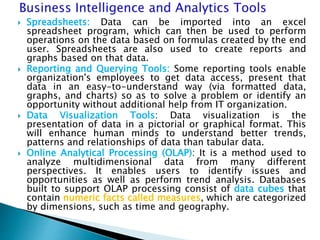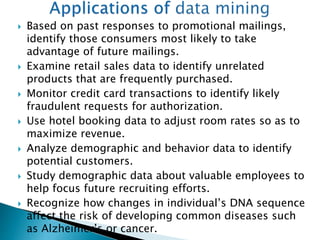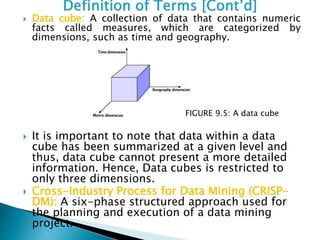This document discusses business intelligence (BI) and analytics. It defines BI as using data and quantitative analysis to support fact-based decision making. Several BI techniques are identified, including data warehouses, data marts and data lakes. The document also discusses how organizations use BI and analytics in areas like finance, marketing, and healthcare. Self-service analytics and its pros and cons are also defined.




















